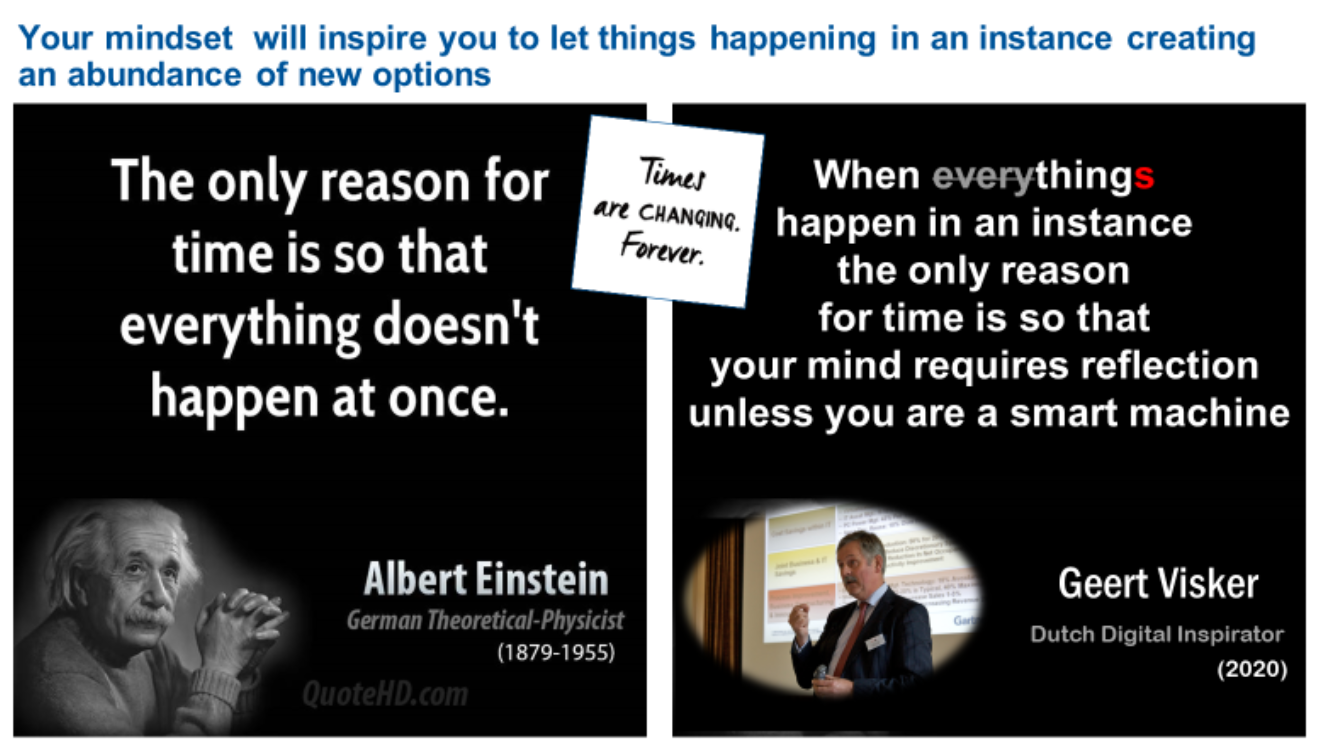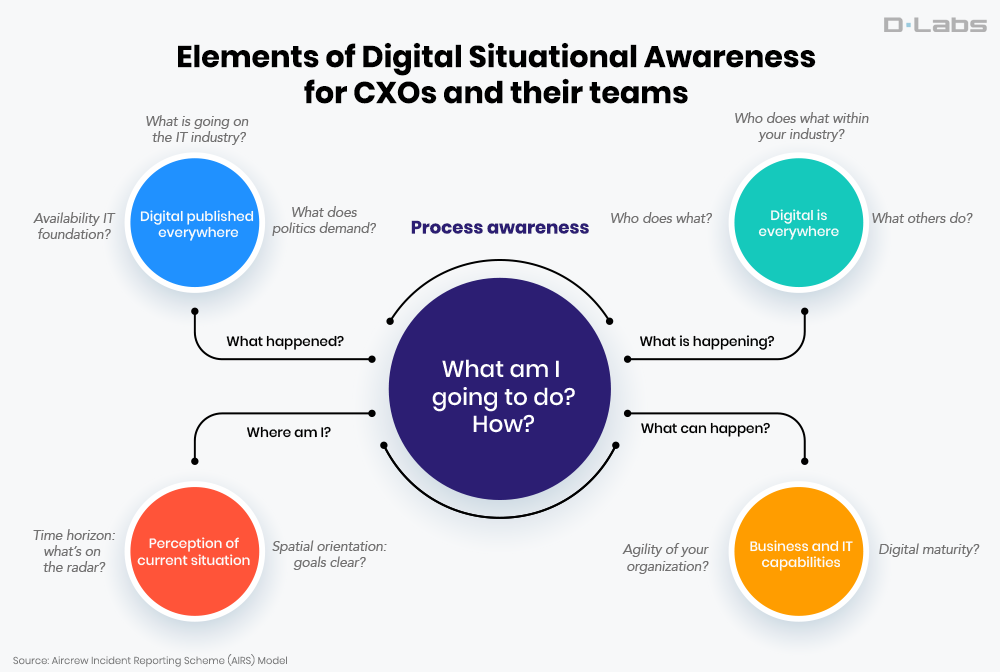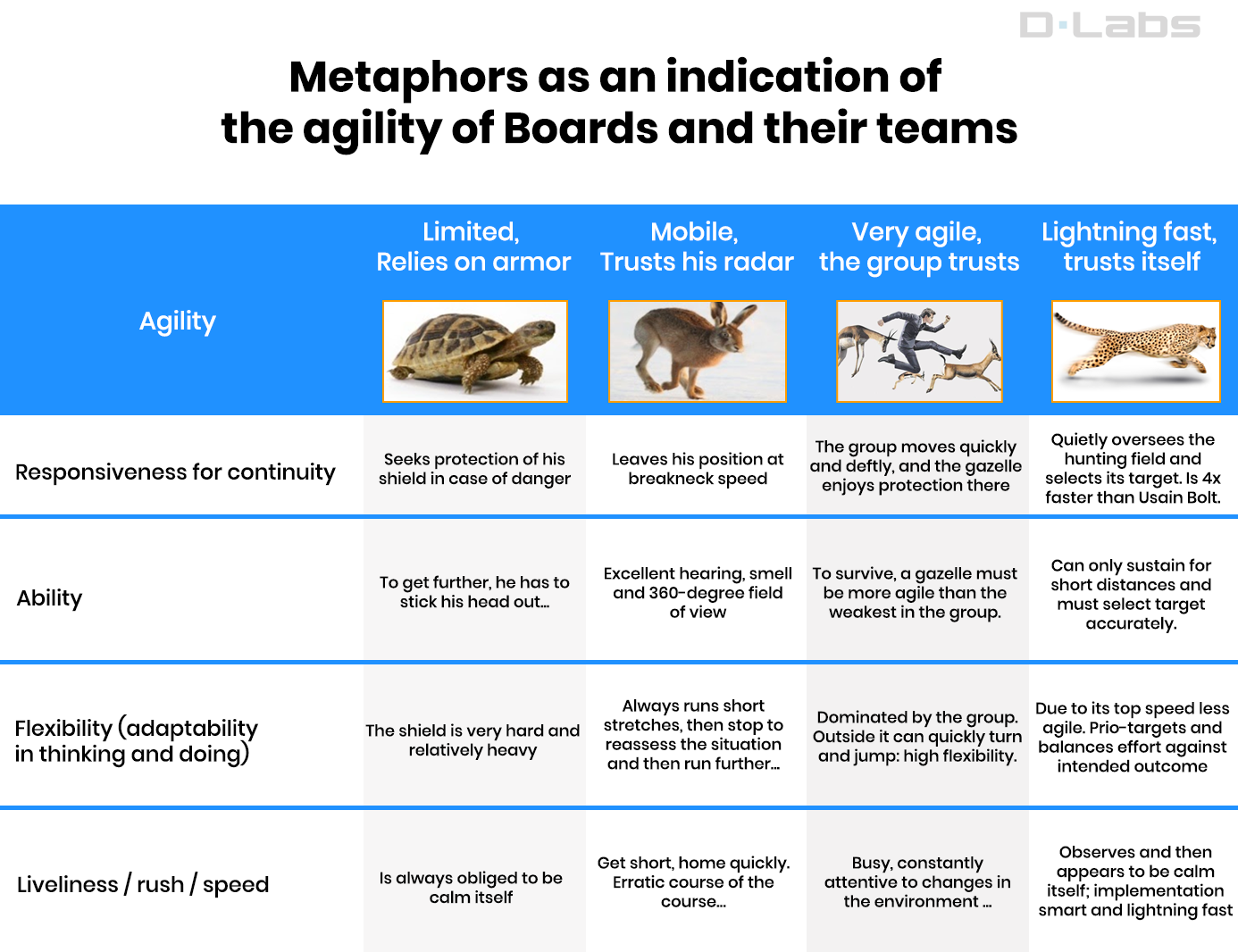Almost every organization has tried to digitalize its business. Unfortunately, only some are successful in this area. Why is that? What can they do to improve outcomes? And how can organizations become ‘digitally proficient’ at a pace that suits them?
In this article, I’ve looked back across my time analyzing various brands’ activities to surface three key observations that answer these questions.
If you can spare five minutes, I invite you to read.
1. Digital innovation and transformation depend on the heartbeat of the organization.
The global economic crisis impacts the heartbeat of every organization. Some industries and organizations show great stamina, and others try to keep their heads above water. Many of them do not survive.
In the meantime, every Board and organization knows that digital technologies are changing societies, industries, organizations, and … themselves.
Board members realize that’s important for them. Almost every organization has started digital initiatives: paying the most attention to surveillance and digital advertising with less focus on climate change and health. COVID-19 encouraged telehealth applications, and this pandemic forced organizations to participate. In truth, that’s the opposite of real collaboration in ecosystems where organizations voluntarily work together to reach objectives that cannot be accomplished individually.
There’s a big gap in the momentum of digital change between industries. Market leaders and new entrants work purposefully on the digital transformation. They seem better at overcoming obstacles than market followers, which are more risk-averse and don’t always feel the need to accelerate.
Gradual change is paramount in the majority of Boardrooms, and so they implement digital initiatives that are “only proven and cost/service-focused.”
Research organizations like Gartner and Forrester reported a shortage of digital literacy; even the World Economic Forum published warnings that Boards and their teams were not ready to navigate their organizations through the digital world.
2. Too many Boards show a certificate of inability when confronted with unexpected setbacks and impending technological innovations.
Becoming digitally proficient depends on leadership’s situational awareness. Market leaders with risk appetite can create a digital mindset to learn on the go, while market followers tend to prefer gradual change. Both have a different, yet equally explicable heartbeat and need to accelerate.
I’ve talked to market leaders who have jumped into the digital journey and created mental room to “learn-on-the-go” and improve both their digital savviness and capability to adapt. Their paths have the characteristics of the modern “electric train” or the “supersonic hyperloop.”
- They design and communicate the right story because it provides a strategic advantage (process, product or service)
- They create financial room to maneuver and allow their employees to reflect and communicate on what they do
- They build capabilities for future products/services
- Access to data and talent
- Empowering people to work in new ways
- Providing day-to-day digital tools
- They are challenging and testing the boundaries of what’s possible. They are not asking for clarity about legal compliance, because they prefer and experience the relative freedom to act.
Are these organizations successful? Generally speaking: the answer is “Yes!” But are they able to show sustainable growth in service, revenue, and profit?
They simply don’t know. They respond to the day-to-day economic dynamics caused by the unprecedented actions of their governments. And the lack of their digital situational awareness becomes obvious.
Market leaders in need of acceleration: two illustrative examples
| (1) A well-known commercial law firm started a successful Legal Lab within the IT department to be the innovation center for the different practice groups. Start-up AI expertise was contracted to develop new AI embedded services together with Fiscal and Law experts. Implementing those services happened to be an unexpected challenge because it cannibalized the current business model. The leadership of the practice groups hesitated to use the new services. The Board of directors was confronted with a delay in momentum, mainly caused by the current governance structure.
(2) A leading international bank fundamentally reorganized its IT department to become a successful digital B2C bank. Business/IT teams were implemented to achieve a perfect mirroring with the business requirements. IT processes have been automized to support a smooth development and implementation process (DevOps). Although the bank wants to create a common platform for its services in every country, the Board is still confronted with a wicked problem: how to align corporate objectives with local revenue/profit responsibilities? That slows down progress. In the B2B departments, the bank created innovation centers that struggle with heavy governance procedures to get the digital balls rolling. |
I’ve worked with market followers that have started their digital journey trying to define the digital dot on the horizon and have created a portfolio and business cases to improve their digital savviness. Their capability to adapt has gradually developed. Their journeys have the characteristics of a “diesel train.”
- They design and communicate the vision of their digital future because it provides ingredients for business cases to be approved and prioritized. (mostly process-focused)
- They create yearly budgets to maneuver and train their employees to prepare for change
- They build capabilities for future products/services
- Access to data through data lakes
- Empowering people to work in new ways
- Providing workplace of the future
- They don’t contribute to blurring boundaries: they prefer to comply with legal regulations/liability and behave like corporate citizens
Are these organizations successful? Generally speaking: the answer is “Yes!” Are they able to show sustainable growth in service, revenue, and profit? They simply don’t know — while their digital situational awareness can be improved as well.
Market followers in need of acceleration: two illustrative examples
| (1) One of the Netherlands’ largest insurance companies defined the dot on the horizon to become a successful digital insurer through close collaboration between business and IT. Currently, the insurer is working on improving the digital awareness of its business leaders to accelerate digital initiatives. They’ve joined a worldwide innovation platform to further increase customer focus and innovative strength through this partnership.
(2) The CFO of Finance & Control of a governmental department initiated a successful Data Lab outside of IT: he appointed a former special service army officer to create the breakthrough. He and his team have built architectural-based access to the organization’s data to offer highly-efficient services at a revolutionary low cost. But progress is faltering after integrating the Data Lab into corporate IT. |
3. Market leaders and followers should become more situationally aware.
However, both market leaders and followers can be more successful in digitalization when they become more situationally aware. Doing so offers new opportunities for them to adjust the heartbeat and improve their digital proficiency. Every organization has to reset its own heartbeat.
We are confronted with a faster-changing, more innovative world. Albert Einstein’s belief in the existence of “time” needs to adapt. Technology enables things to happen instantly, and that’s why we — as human beings — need time to reflect. Unless we are a smart machine loaded with Artificial Intelligence and Machine Learning capabilities…
Although issues in day-to-day operations require Board-level attention, Board members and their teams need to apply more focus and energy to digital innovation.
The directors and managers of a city with one of the biggest harbors in the world discovered it’s almost impossible to digitalize a place without knowing what’s happening in the digital world — as much as the situation and agility of an organization. They did what many boards have done before: they appointed dedicated innovation managers and quartermasters to kickstart innovation programs and projects with limited results.
So it’s time for Boards and their teams to take action themselves to improve their digital situational awareness and lead with a digital heart:
Improve Process Mode awareness
- Get informed about digital applications published everywhere
- Increase your information position on how digital is used everywhere
Be action-oriented, lead and engage
3. Look how your own life is becoming digital (“if you want to change your organization, you have to change yourself first”).
4. Sense, analyze and respond to what’s happening in your organization
The place to be is in the upper-right corner of the following matrix. I’ve called this the “digitally proficient” arena: where organizations are capable of executing their strategy in their ecosystem while continually looking for digital improvement — even if they’re already successful. We’ve observed three possible journeys for organizations to become “digitally proficient” at a pace that suits them (see the illustration in the matrix)
.

Journey 1: Grow and go with the speed and endurance of a “diesel train” (preferred by risk-averse market followers)
Journey 2: Learn on the go with the speed of an “electric train” (most frequently chosen by market leaders with risk appetite who dare to “jump in at the deep end”)
Journey 3: Dive and go with the speed and acceleration of the “hyperloop” (preferred by start-ups and only a few market leaders with a high level of risk appetite)
When Boards become more digitally aware, it will be easier for them to find their way to the digitally proficient arena. Climbing the digital maturity ladder requires research, analysis, and education, finally enabling them to work according to their plan. During this journey, the most effort will be invested in ‘paperwork’ — and some digital progress may occur.
It’s evident that organizations, Board members, and their teams will increase their agility by “learning on the go.” They will make beginner errors, but they will learn quickly through experiments, dry-runs, and trials.
| Bottom line: determine whether you are a tortoise, a hare, a gazelle or a cheetah and what’s best for your organization
Board members and their teams need to improve their digital maturity and their ability to be agile. Being digitally situationally aware is crucial to paving the road… |
As you can see, there are many complex reasons why companies cannot adequately prepare for digitalization. But what are your observations on the subject? Do you know any ways to improve the digital awareness of market leaders?
Please — share your insights!









